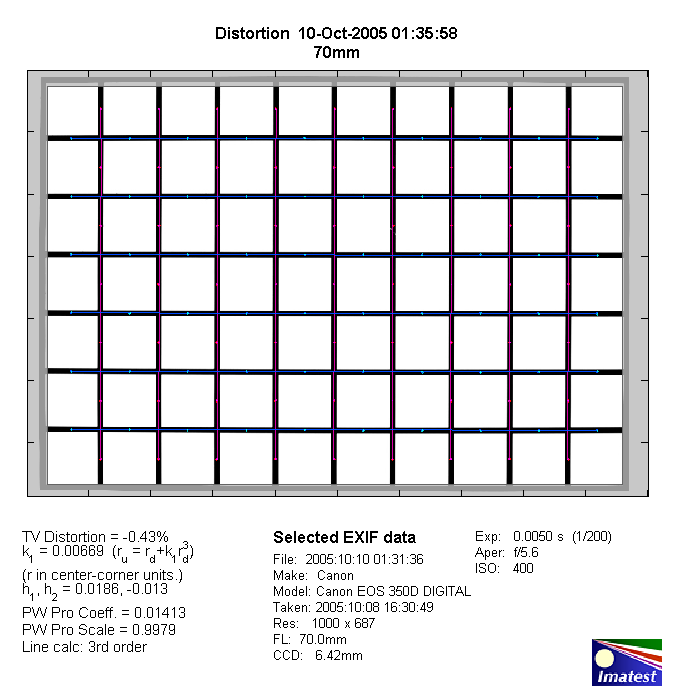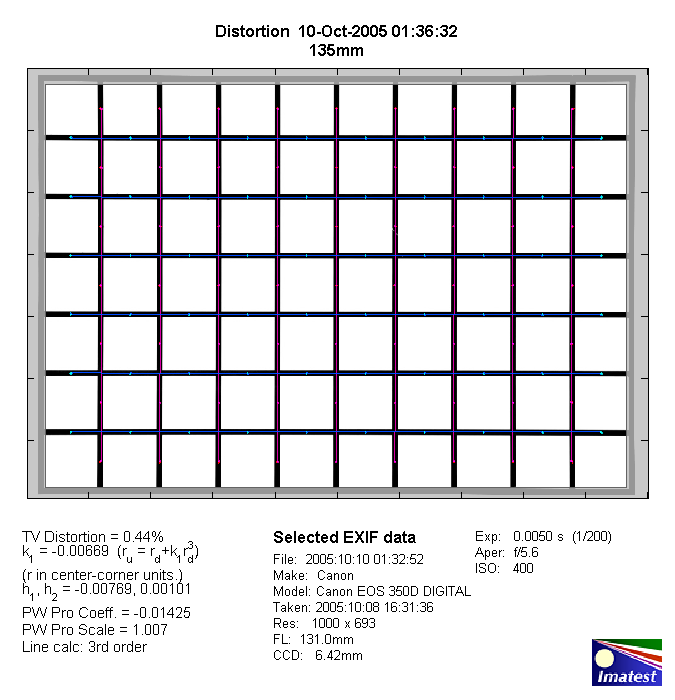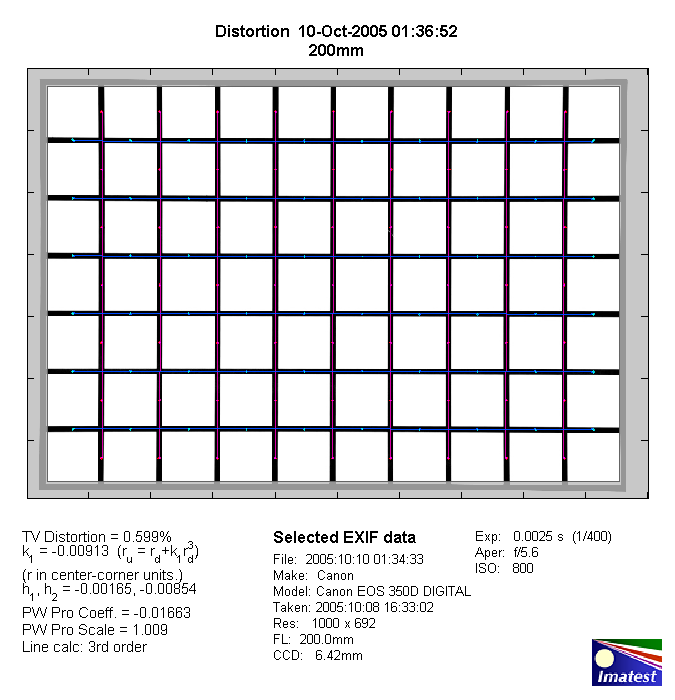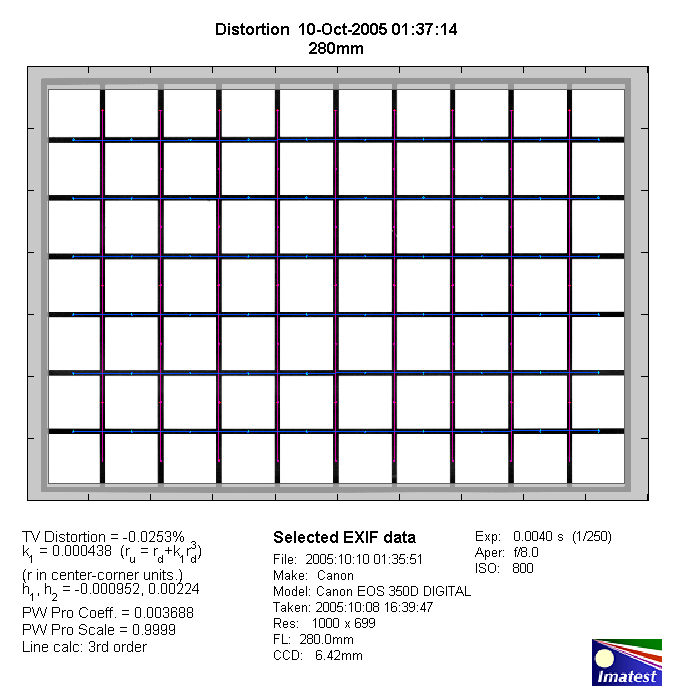|
Canon EF 70-200mm f/4 USM L - Review / Test Report - Analysis |
|
Lens Reviews -
Canon EOS (APS-C)
|
|
Page 2 of 3
Distortion
The level of distortion is very low for a zoom lens with a minor degree of barrel distortion
at 70mm changing to minor pincushion distortion at 135mm and 200mm. Its quite interesting
that the lens is basically free of distortion when used with the EF 1.4x II converter.
An excellent performance here.
70mm:

135mm:

200mm:

280mm (with EF 1.4x II):

The chart above has a real-world size of about 120x80cm. Possibly expect more distortions towards closer focus distances.
Vignetting
Vignetting is very well controlled with the lens. At 70mm and 135mm vignetting is quite already
negligible at f/4. At 200mm there's slight more vignetting with ~0.5EV at f/4 - usually nothing
to worry about but in extreme situation your may prefer to stop down by a half f-stop to eliminate
the remaining artifacts. When combined with the Canon EF 1.4x II tele converter the vignetting is
at ~0.3EV wide-open which is a non-issue in the field.

MTF (resolution)
Updated 02/21/2006: A second sample of this lens has been tested in the meanwhile.
The new one performed substantially better with higher LW/PH figures
equivalent to about a school mark.
The latest sample of the EF 70-200mm f/4L showed an excellent resolution in the lab
with a very even performance throughout the range and across the tested aperture range.
Stopping down from f/4 resulted only in a slight increase in resolution. The quality
of the naked lens is easily on fix-focal level.
Combined with the EF 1.4x II the results decreased somewhat compared to comparable
aperture settings with the naked lens at 200mm - nonetheless the quality easily
resides in very good territory. Really impressive for a zoom lens.
While the second sample showed a significantly better performance it seemed to have
an optical flaw with an off-coplanar projection of the scene.
Please note that the MTF results are not directly comparable across the different systems!
Below is a simplified summary of the formal findings. The chart shows line widths per picture height (LW/PH) which can be taken as a measure for sharpness.
If you want to know more about the MTF50 figures you may check out the corresponding Imatest Explanations
Chromatic Aberrations
Even if it may start to get boring the lens also showed an excellent behavior regarding
chromatic aberrations (color shadows at harsh light transitions) peaking at about 0.5 pixels
on the average at the image borders. That's nothing to worry about by most standards.
As expected CAs get a little worse with the EF 1.4x II but the issue remains well within
acceptable limits here as well.

|